Last night I decided that it was time to get some swordwork with Max. For some time, I've been working with Max and we've been to a few reenactment events where we've had mock battles. Unfortunately, both Max and I need work in this area. For Max, one big problem is that he doesn't always like to follow the opponent, rather he'll attempt to veer off in the opposite direction- normally, when you do a mock swordfight (since you're not intentionally trying to injure/kill your opponent), you basically clash blades and push back and forth (some call this the "Dance of the Saber Fairies"). You can also spin in place while clashing blades, typically spinning to the right, following your sword arm.
As I mentioned above, Max has issues with this. Also, when doing the initial approach, sometimes Max attempts to refuse contact and will abruptly swerve (typically to the left). Needless to say, this is a real pain and so far I've been able to keep my seat but it really puts a strain on the legs.
To address the situation, I've been working on a combination of mock battles with a friend, constant manuever drills on my own, and rethinking how I keep my seat. After some analysis in conjunction with my trainer, we concluded that part of the problem may be that in attempting to wield my sword, I'm leaning out (it's a natural thing that we don't really think about too much) and this in turn is putting hip pressure to the right side, thus actually driving the horse AWAY from the opponent.
To correct this, we've been doing a series of drills where I approach a target (typically a bush, tree, or some other object) while dropping my hips to the left and putting pressure to drive me towards the right (following the sword arm). At the same time, I'm extending the trunk of my body to the right. It basically feels like I'm bending into a "V" of sorts and it's counter-intuitive but it serves to force the horse towards the opponent while at the same time you're able to maintain your sword swing. You can also do this in the opposite direction (i.e. holding you sword arm over the withers and attacking to the left). I usually do this using a dressage whip.
Another new development is holding the reins in one hand and maintaining independent reins where you can manipulate just one rein at a time rather than both. This is typically employed in two-handed reining but it's a bit more tricky when using one hand (and especially when combined with a snaffle bit but that's another story). I've practicing moving my fingers and manipulating both sides independently and it's not easy. The idea though, is to be able to direct rein the horse and communicate with him in a more sure manner (kind of like a loud "HEY BUDDY!").
I've noticed that this is especially useful in leg yields and half-passes. Now granted, I'm just learning this and I've made mistakes with this, combined with an improved seat should (and I say SHOULD) help in sword work in that it can be used to head off Max's refusals and keep him moving in the right direction when clashing swords. At a minimum, it should remove the incentive/opportunity for Max to take the "easy way" out of close contact situations. Don't get me wrong, Max doesn't appear to have a problem with close-manuevering and sword fighting, it seems to be more a matter of differing interpretations on how it should be done.
So, getting back to last night- we did a number of drills in an attempt to put all the pieces together. It's a lot of work when using a real sword, especially with the weight and that the sword I have is an unbalanced reproduction (trust me, the originals work a lot better but I'm a bit short on cash at this time). This is something that I'll have to put some more time into but hopefully the payoff will be good. Certainly Max didn't seem to mind and he was especially good in the tight manuevering and spinning. Now to put all the pieces together and make it all work. :-)
As I mentioned above, Max has issues with this. Also, when doing the initial approach, sometimes Max attempts to refuse contact and will abruptly swerve (typically to the left). Needless to say, this is a real pain and so far I've been able to keep my seat but it really puts a strain on the legs.
To address the situation, I've been working on a combination of mock battles with a friend, constant manuever drills on my own, and rethinking how I keep my seat. After some analysis in conjunction with my trainer, we concluded that part of the problem may be that in attempting to wield my sword, I'm leaning out (it's a natural thing that we don't really think about too much) and this in turn is putting hip pressure to the right side, thus actually driving the horse AWAY from the opponent.
To correct this, we've been doing a series of drills where I approach a target (typically a bush, tree, or some other object) while dropping my hips to the left and putting pressure to drive me towards the right (following the sword arm). At the same time, I'm extending the trunk of my body to the right. It basically feels like I'm bending into a "V" of sorts and it's counter-intuitive but it serves to force the horse towards the opponent while at the same time you're able to maintain your sword swing. You can also do this in the opposite direction (i.e. holding you sword arm over the withers and attacking to the left). I usually do this using a dressage whip.
Another new development is holding the reins in one hand and maintaining independent reins where you can manipulate just one rein at a time rather than both. This is typically employed in two-handed reining but it's a bit more tricky when using one hand (and especially when combined with a snaffle bit but that's another story). I've practicing moving my fingers and manipulating both sides independently and it's not easy. The idea though, is to be able to direct rein the horse and communicate with him in a more sure manner (kind of like a loud "HEY BUDDY!").
I've noticed that this is especially useful in leg yields and half-passes. Now granted, I'm just learning this and I've made mistakes with this, combined with an improved seat should (and I say SHOULD) help in sword work in that it can be used to head off Max's refusals and keep him moving in the right direction when clashing swords. At a minimum, it should remove the incentive/opportunity for Max to take the "easy way" out of close contact situations. Don't get me wrong, Max doesn't appear to have a problem with close-manuevering and sword fighting, it seems to be more a matter of differing interpretations on how it should be done.
So, getting back to last night- we did a number of drills in an attempt to put all the pieces together. It's a lot of work when using a real sword, especially with the weight and that the sword I have is an unbalanced reproduction (trust me, the originals work a lot better but I'm a bit short on cash at this time). This is something that I'll have to put some more time into but hopefully the payoff will be good. Certainly Max didn't seem to mind and he was especially good in the tight manuevering and spinning. Now to put all the pieces together and make it all work. :-)




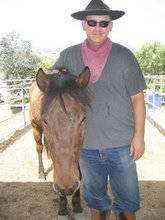
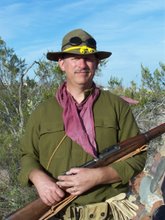
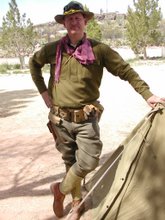
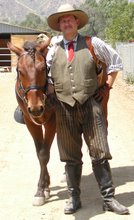
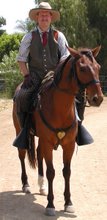

No comments:
Post a Comment